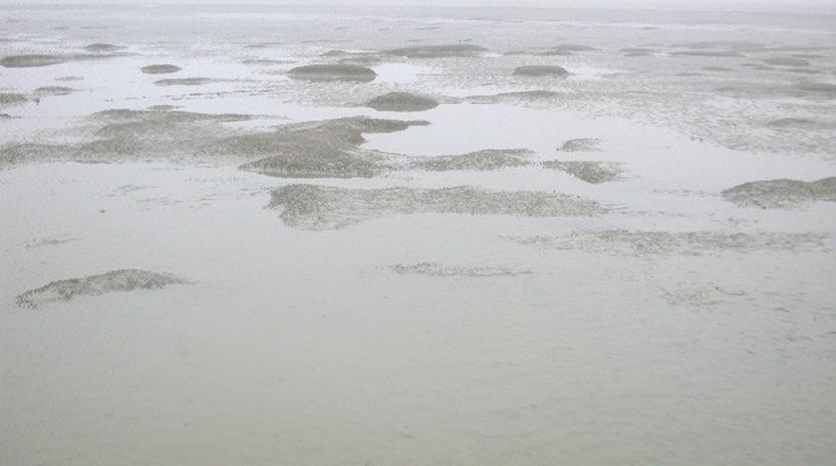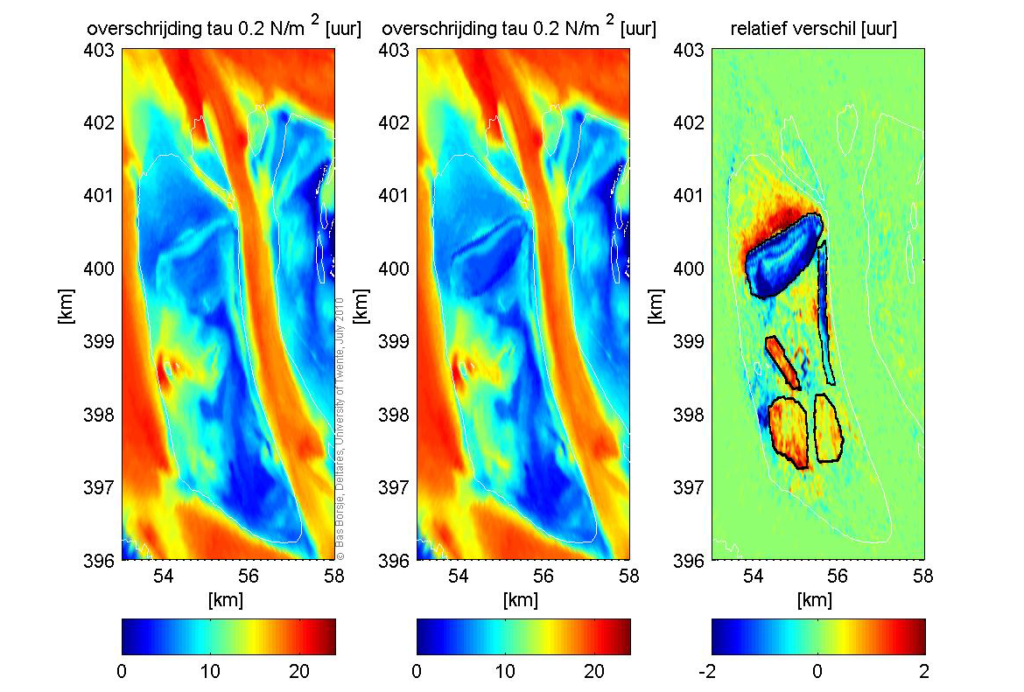Practical Applications
Projects that can benefit from the tool are projects in which the biotic features are expected to have an impact on the roughness height. The tool is applicable in the Planning and Design Phase, to analyse the effects of different biological structures on the hydrodynamics and morphology.

Results for the Galgeplaat
In order to determine the relative impact of the different roughness elements on the Galgeplaat, the variable roughness elements were included in an existing hydrodynamic model set-up (Das, 2010). The model was run for just one day (1 November 2009), with realistic boundary conditions. Evaluation of the model results was done on the water level, flow velocity and bed shear stress. Moreover, evaluation of the model results were done on the time a certain value of the bed shear stress was exceeded. The bed shear stress is a measure for the sediment transport and gives insight in the possible impact of different roughness elements of sediment transport.
As shown in the adjacent figure the flow velocity is influenced by the difference in roughness height, resulting in a major impact on the bed shear stress. The time the bed shear stress exceeds 0.2 N/m2 is both increased and decreased by the roughness elements.

Surprisingly, not only the bed shear stress is influenced at the location of the roughness elements, but also on a larger scale. For example, the diatom mats induce lower bed shear stresses, though due to the increase in flow velocity the bed shear stress outside the diatom mats is increased. The same explanation could be given for the tube building worms. In practice, both diatoms mats and tube building worms patches show an elevation compared to the surrounding area, which could be caused by the active particle uptake by both bio-engineers, but might also partly be caused by the mechanism shown in this model result. In mussel beds, the increased bed shear stress (and turbulence) is considered to increase the food supply of algae and to eliminate the faecal pellets. Increased bed shear stress is also favoured by lugworms, while they could also eliminate their casts.
